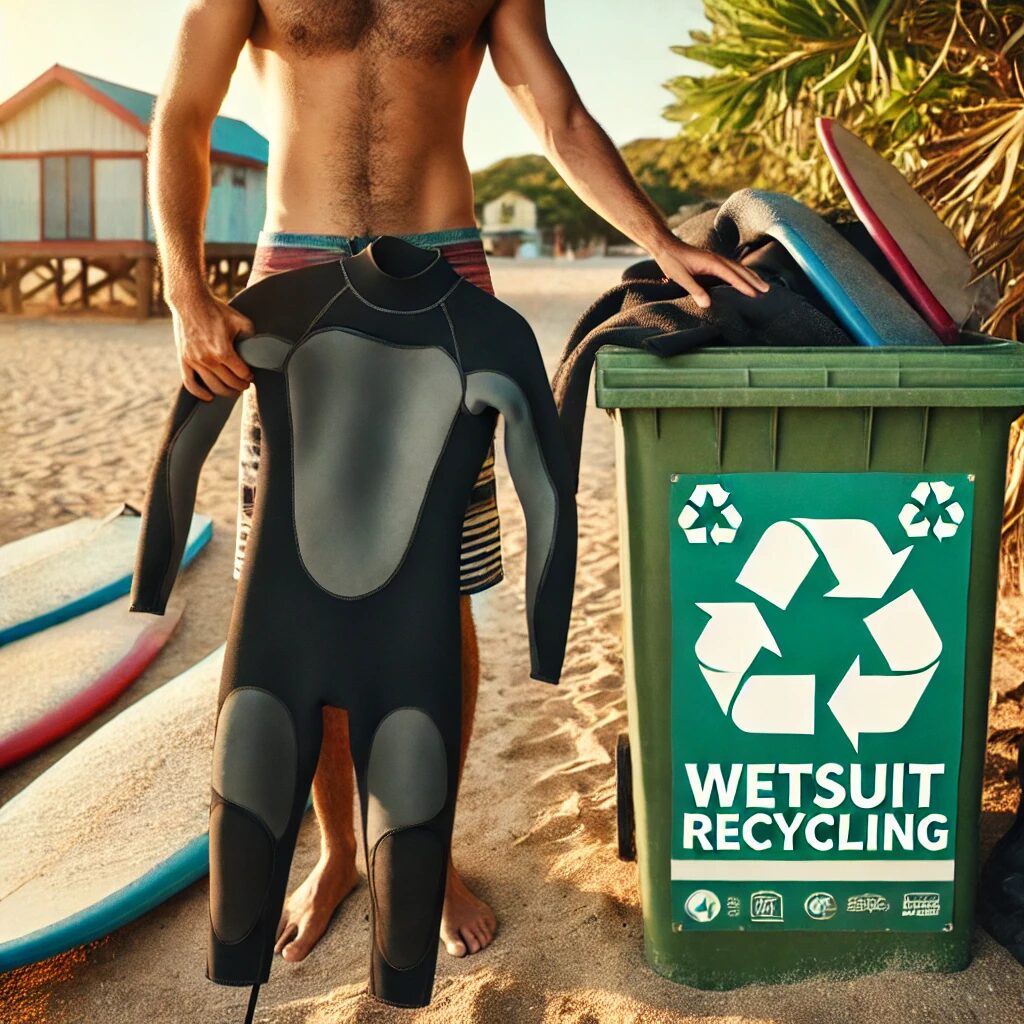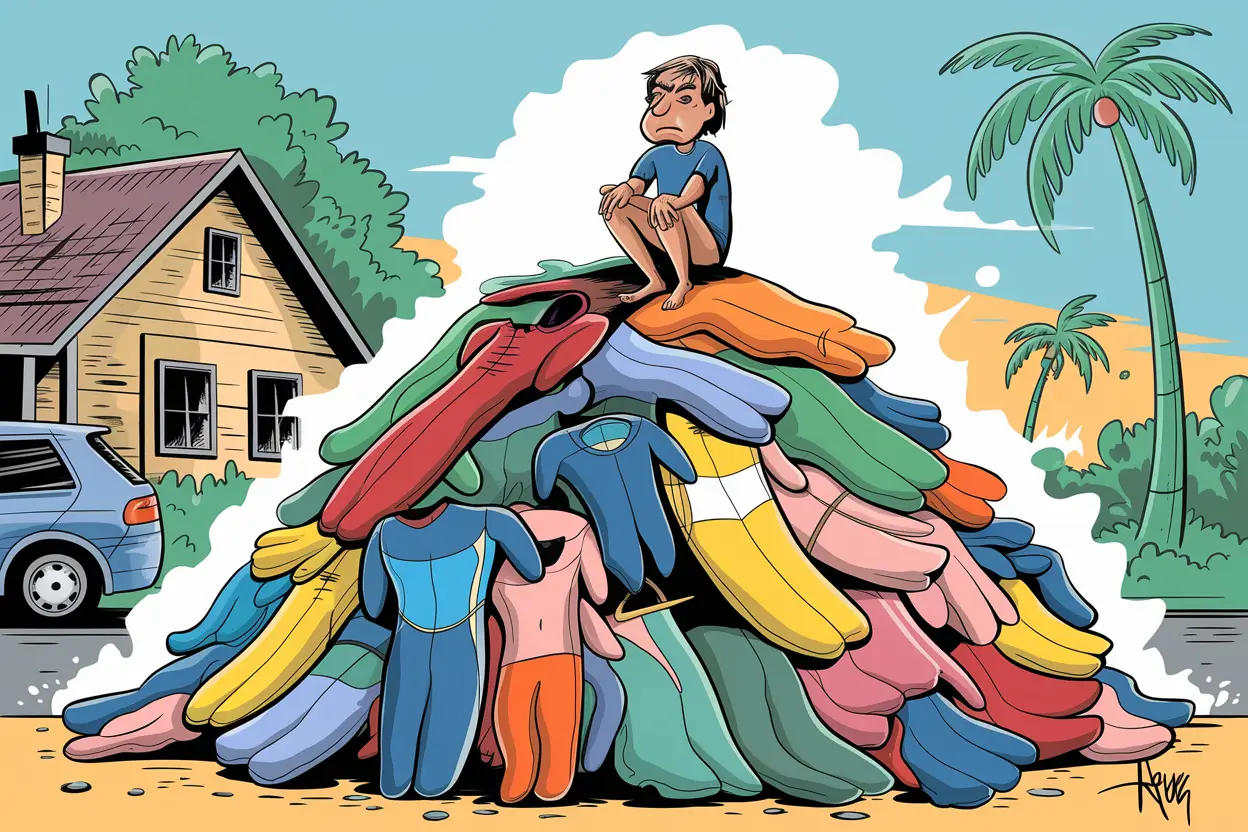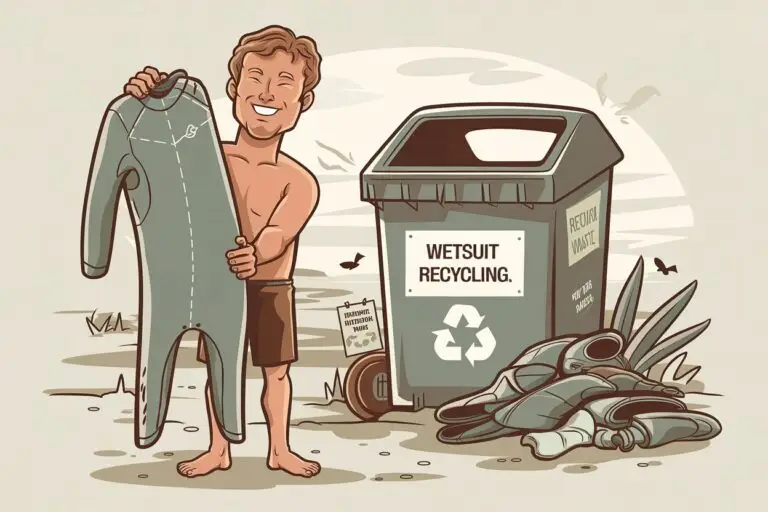Most of thies orasdlkfjlaskdj flaksdjf laskdj flkasdj flak;sdj f;laskHave you ever wondered what happens to old wetsuits once they’ve outlived their aquatic adventures? As enthusiasts of the waves and watersports, we often face the dilemma of disposing of worn-out wetsuits in an environmentally friendly way. Recycle, repurpose, or reuse—these are the key strategies for giving your old wetsuit a second life while contributing positively to the planet. In this guide, we’ll dive into creative and practical ways to manage your old wetsuits, ensuring they don’t end up in a landfill but instead benefit both you and the environment.
Sustainable Solutions for Old Wetsuits
When it comes to dealing with old wetsuits, the approach you take can significantly impact both the environment and your personal footprint. Instead of tossing that worn-out neoprene into the trash, why not explore innovative and eco-friendly options? Here’s a deep dive into the best ways to recycle, repurpose, and reuse your old wetsuits, ensuring they make a positive impact rather than contributing to landfill waste.
-
Recycling Programs and Companies
First and foremost, many specialized recycling programs focus on handling neoprene, the primary material used in wetsuits. These programs are designed to process old wetsuits and convert them into useful products. Organizations like Repreve and Bureo offer excellent programs where wetsuits can be sent in for recycling. They often repurpose the neoprene into new items such as surfboard pads, insulation materials, or even new wetsuits. This process involves shredding the wetsuit material, removing contaminants, and then reforming it into new, usable forms. By participating in these programs, you’re not only giving your wetsuit a second life but also supporting the circular economy.
-
Donating to Charitable Organizations
Another viable option is to donate your old wetsuit to charitable organizations or local surf schools. Many of these institutions are on the lookout for used wetsuits to distribute to those in need. Non-profits like One World Surf and SurfAid often accept donations and use them to support underprivileged communities or conservation projects. Donating not only helps others who may not have access to new gear but also keeps your old wetsuit in circulation, reducing waste.
-
Creative Repurposing Ideas
If recycling or donating doesn’t seem like the right fit, consider repurposing your wetsuit into something entirely new. Here are a few creative ideas to get you started:
- DIY Projects: Transform your old wetsuit into unique items such as insulated dog beds, rugged outdoor mats, or even stylish accessories like wallets and phone cases. The flexible and durable nature of neoprene makes it perfect for crafting and DIY projects.
- Gardening Gear: Cut the wetsuit into strips and use them as sturdy, weather-resistant plant ties or garden kneepads. The neoprene’s resilience to water and dirt can be quite handy in the garden.
-
Upcycling in Art and Fashion
For the creatively inclined, old wetsuits can be upcycled into art or fashion pieces. Artists and designers often seek out neoprene for its distinctive texture and waterproof qualities. Consider reaching out to local artists or fashion designers who might find your old wetsuit to be a valuable resource for their next project.
-
Trade-In or Buyback Programs
Lastly, check if your wetsuit’s brand offers a trade-in or buyback program. Many surf gear companies are now offering incentives for returning old gear in exchange for discounts on new purchases. Brands like Patagonia and Rip Curl have initiated such programs, making it easier for consumers to responsibly manage their old equipment.

Where to Recycle or Repurpose Your Old Wetsuit: A Comparative Guide
When it comes to giving your old wetsuit a new lease on life, knowing your options and understanding the available services can make all the difference. Whether you’re looking to recycle, donate, or repurpose your wetsuit, several organizations and companies offer diverse solutions. This section provides a comparative overview of some top choices for recycling programs, donation options, and repurposing services.
Comparison Table: Wetsuit Recycling and Repurposing Options
| Service/Company | Type | Description | Special Features | Website |
| Repreve | Recycling Program | Processes old wetsuits into new products like surfboard pads and insulation. | Part of the larger textile recycling network. | repreve.com |
| Bureo | Recycling Program | Converts neoprene into new products and supports ocean conservation. | Partners with surf brands and conservationists. | bureo.com |
| One World Surf | Donation Program | Accepts used wetsuits for distribution to those in need globally. | Focuses on helping underserved communities. | oneworldsurf.org |
| SurfAid | Donation Program | Collects used wetsuits to aid in disaster relief and community development. | Combines donations with humanitarian efforts. | surfaid.org |
| Patagonia | Trade-In/Buyback Program | Offers discounts on new gear in exchange for old wetsuits. | Known for eco-friendly and sustainable practices. | patagonia.com |
| Rip Curl | Trade-In/Buyback Program | Provides incentives for returning old wetsuits and surf gear. | Focus on reducing environmental impact. | ripcurl.com |
| Neoprene Crafting Kits | DIY Repurposing Kits | Supplies materials and instructions for repurposing old wetsuits into new items. | Ideal for crafting and home projects. | neoprenecrafting.com |
Detailed Insights:
-
Recycling Programs
Repreve and Bureo are leading the way in neoprene recycling, turning old wetsuits into valuable new products. Repreve is part of a broader textile recycling network, making it a robust choice for those looking to support a large-scale recycling initiative. Bureo, on the other hand, focuses on ocean conservation and has established partnerships with surf brands to enhance its impact. Both options ensure that your old wetsuit is not just discarded but reformed into useful items.
-
Donation Programs
Organizations like One World Surf and SurfAid offer excellent alternatives for those who prefer to donate their wetsuits. One World Surf operates globally, distributing gear to those in need while promoting sustainable practices. SurfAid integrates wetsuit donations into its broader humanitarian missions, making it an excellent choice if you want your old gear to support both environmental and social causes.
-
Trade-In and Buyback Programs
Patagonia and Rip Curl provide trade-in and buyback programs that allow you to exchange your old wetsuit for discounts on new purchases. These programs are particularly attractive for frequent surfers who want to maintain their gear while supporting sustainable practices. Patagonia, known for its commitment to environmental responsibility, also integrates its trade-in program into its broader sustainability efforts. Rip Curl offers similar incentives with a focus on minimizing environmental impact.
-
DIY Repurposing Kits
For the crafty at heart, neoprene crafting kits offer a hands-on approach to repurposing old wetsuits. These kits typically include everything you need to create new items from your old gear. Whether you’re making insulated mats or stylish accessories, these kits provide a fun and creative way to extend the life of your wetsuit while reducing waste.
Practical Steps for Recycling or Repurposing Your Old Wetsuit
Turning your old wetsuit into a positive environmental action involves more than just knowing your options—it requires taking practical steps to ensure your gear is handled responsibly. Here’s a streamlined guide to help you navigate the process, making sure your old wetsuit is recycled or repurposed efficiently.
-
Assess the Condition
Before deciding on the best course of action, evaluate the condition of your wetsuit. Is it still in usable shape, or is it beyond repair? For wetsuits that are still functional, donation programs might be the best choice. If the wetsuit is too worn out for reuse, recycling or repurposing becomes the primary option.
-
Research and Select a Program
Based on your assessment, choose a recycling or donation program that aligns with your values and the condition of your wetsuit. For instance, if you’re looking to support a charity, organizations like One World Surf and SurfAid can be ideal. If you prefer recycling, companies like Repreve and Bureo offer robust programs for transforming old wetsuits into new products.
-
Prepare for Shipment
Once you’ve selected a program, prepare your wetsuit for shipment. Clean the wetsuit thoroughly to remove any dirt or contaminants. For recycling programs or donation programs, it’s crucial to follow any specific guidelines provided by the organization to ensure proper processing. Most of these programs are volunteer based. The last thing you want is to make their jobs harder than it needs to be.
-
Drop-Off or Mail
For local donation programs, you might need to drop off your wetsuit at a designated collection point. If you’re participating in a national recycling program or a trade-in offer, you’ll likely need to mail your wetsuit. Obtain the necessary mailing labels or instructions and send your wetsuit to the specified address.
-
Follow Up
After you’ve sent off your wetsuit, consider following up with the organization to confirm receipt and ensure that your gear is being put to good use. Many programs offer tracking or confirmation once the wetsuit is processed.

Frequently Asked Questions: Recycling and Repurposing Old Wetsuits
Why should I recycle or repurpose my old wetsuit?
Recycling or repurposing old wetsuits helps reduce environmental impact by preventing these items from ending up in landfills. Wetsuits are typically made from neoprene, a material that can take years to decompose. By choosing to recycle or repurpose, you’re extending the life of the material and contributing to a more sustainable and eco-friendly practice. Additionally, many recycling programs and repurposing initiatives support charitable causes, providing further benefits beyond environmental impact.
How can I find a recycling program for my wetsuit?
Finding a recycling program involves a bit of research. Start by checking the website of wetsuit manufacturers or surf brands, as many offer recycling or take-back programs. Companies like Patagonia and Rip Curl have established trade-in programs where you can exchange old wetsuits for discounts on new purchases. Additionally, organizations like Repreve and Bureo specialize in recycling neoprene and can guide you on how to send in your old gear.
What should I do if my wetsuit is too damaged to recycle?
If your wetsuit is severely damaged and not suitable for recycling or donation, consider repurposing it creatively. Neoprene is a versatile material that can be used in various DIY projects. For instance, you can transform old wetsuits into gardening mats, dog beds, or even fashion accessories. Crafting kits for neoprene projects are available online, providing materials and instructions for turning your old wetsuit into new, useful items.
Can I donate my wetsuit to a charity?
Yes, donating your wetsuit to a charity is a great option if it’s still in good condition. Organizations like One World Surf and SurfAid accept used wetsuits to distribute to those in need. Donating helps provide gear to underserved communities and supports humanitarian efforts. Ensure that your wetsuit meets the charity’s requirements and is clean before donating.
Are there any costs associated with recycling or donating my wetsuit?
Costs can vary depending on the program. Some recycling programs or trade-in offers might require you to cover shipping costs. However, many donation programs do not charge for dropping off gear. If you’re using a trade-in program, there may be no cost involved beyond the initial purchase of new gear, as these programs often offer discounts in exchange for old items.
How can I prepare my wetsuit for recycling or donation?
Preparing your wetsuit involves a few simple steps:
- Clean the wetsuit: Thoroughly wash and dry your wetsuit to remove any dirt, salt, or debris.
- Check for guidelines: Follow any specific instructions provided by the recycling or donation program, such as removing accessories or labels.
- Pack securely: For mailing, ensure your wetsuit is packed securely to prevent damage during transit.
What happens to my wetsuit once it’s recycled?
Once recycled, your wetsuit can be transformed into a variety of new products. Companies like Repreve and Bureo shred the neoprene, remove contaminants, and reform it into items such as surfboard pads, insulation materials, or even new wetsuits. This process helps reduce waste and supports the creation of sustainable products.
Can I use my old wetsuit for any other purposes before recycling?
Absolutely! If you’re not ready to recycle or donate, consider repurposing your wetsuit for practical uses around the house or garden. It can serve as a durable gardening mat, provide insulation for outdoor projects, or even be used in creative DIY projects like homemade wallets or phone cases. The possibilities are endless!
How can I ensure my old wetsuit is being recycled responsibly?
To ensure responsible recycling, choose programs that are transparent about their processes and have a good reputation for environmental stewardship. Look for certifications or partnerships with reputable environmental organizations. Checking reviews and program details can also provide insight into how your wetsuit will be handled.
Making the Most of Your Old Wetsuit
From recycling programs that transform worn-out neoprene into new products, to donation initiatives that provide much-needed gear to those in need, there are numerous ways to extend the life of your wetsuit beyond its original purpose.
By choosing to recycle, repurpose, or donate, you’re not just reducing waste but also contributing to a larger movement towards sustainability and responsible consumption. Each option—from creative DIY projects to participating in trade-in programs—offers a chance to align your actions with eco-friendly practices.
Embracing these solutions ensures that your old wetsuit doesn’t simply end up in a landfill but instead becomes a part of a positive environmental and social impact. So, the next time you’re ready to part with your wetsuit, consider the options available to you and make a choice that reflects your commitment to sustainability.
For more interesting articles, read this:
Wetsuit Buying Guide for Beginner Surfers




